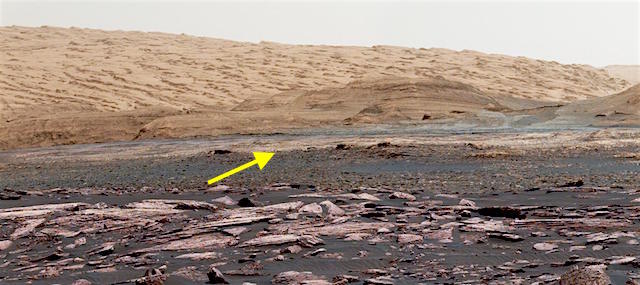 The car-size NASA rover on a Martian mountain, Curiosity, has begun its long-anticipated study of an iron-bearing ridge forming a distinctive layer on the mountain’s slope.
The car-size NASA rover on a Martian mountain, Curiosity, has begun its long-anticipated study of an iron-bearing ridge forming a distinctive layer on the mountain’s slope.
Since before Curiosity’s landing five years ago next month, this feature has been recognized as one of four unique terrains on lower Mount Sharp and therefore a key mission destination. Curiosity’s science team informally named it “Vera Rubin Ridge” this year, commemorating astronomer Vera Cooper Rubin (1928-2016).
“Our Vera Rubin Ridge campaign has begun,” said Curiosity Project Scientist Ashwin Vasavada of NASA’s Jet Propulsion Laboratory, Pasadena, California. “Curiosity is driving parallel to the ridge, below it, observing it from different angles as we work our way toward a safe route to the top of the ridge.”
A major appeal of the ridge is an iron-oxide mineral, hematite, which can form under wet conditions and reveal information about ancient environments. Hematite-bearing rocks elsewhere on Mars were the scientific basis for choosing the 2004 landing site of an older and still-active rover, Opportunity. Studies of Mount Sharp with the Compact Reconnaissance Imaging Spectrometer for Mars, on NASA’s Mars Reconnaissance Orbiter, identified hematite in the ridge and also mapped water-related clay and sulfate minerals in layers just above it.
Vera Rubin Ridge stands about eight stories tall, with a trough behind it where clay minerals await. Curiosity is now near the downhill face, which forms an impressive wall for much of the ridge’s length of about 4 miles (6.5 kilometers).
“In this first phase of the campaign, we’re studying the sedimentary structures in the wall,” said JPL’s Abigail Fraeman, a Curiosity science-team member who helped plan these observations… [More at link]








